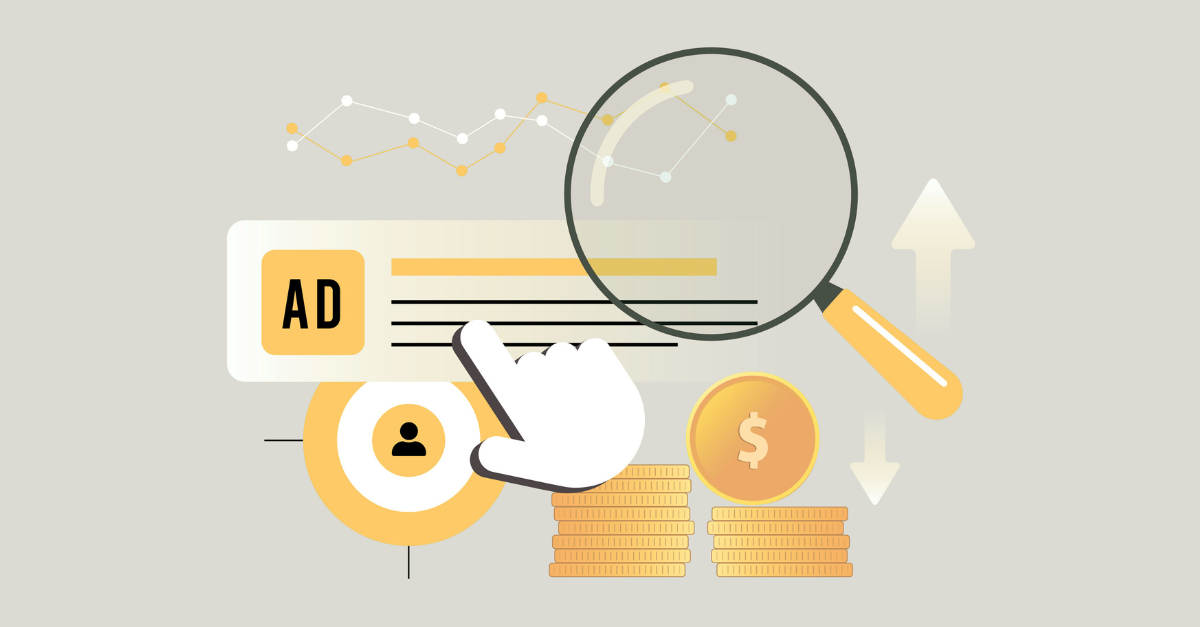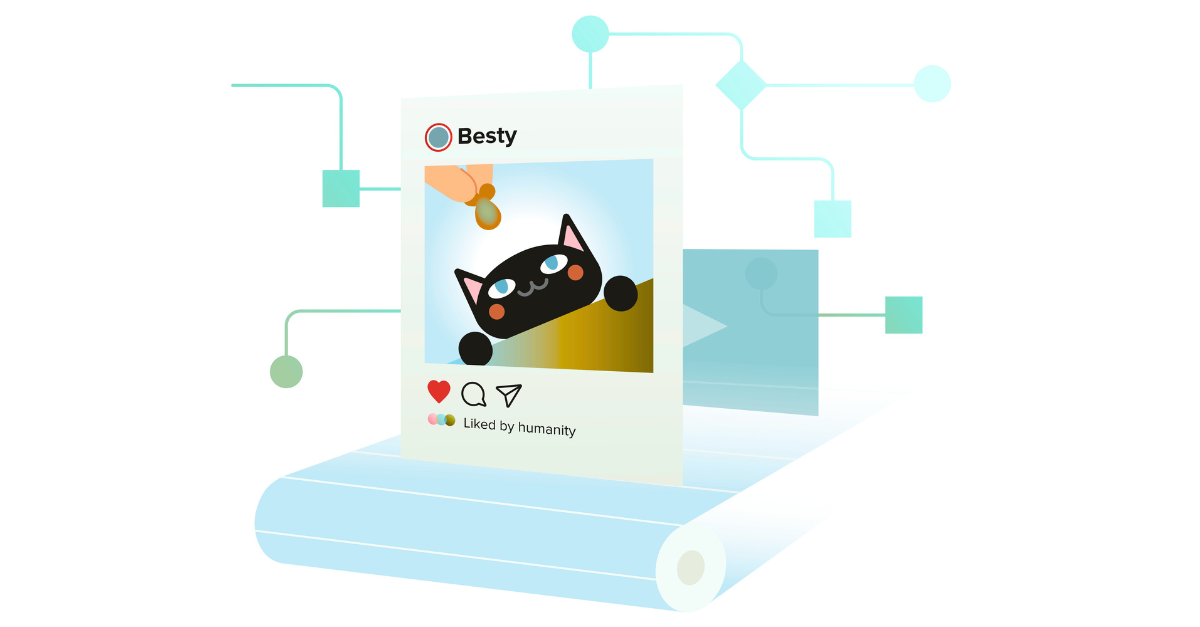Let’s go back to those marketing 101 courses that break down the details of how the world of selling works. There’s the traditional path for marketing (TV, radio, direct mail, etc.) and now, thanks to the internet, there is also a digital path (email, SMS, social media, etc.). And, as we’ve all seen, digital is quickly becoming the dominant form of marketing especially when it comes to social media advertising.
Social media is everywhere and has the potential to reach nearly everyone. Just take my 80 year old grandmother for example—she still uses a flip phone but also uses YouTube daily on her tablet and smart TV.
Social media marketing really is everywhere. It’s coming for consumers and teaming up with marketers with a prowess we’ve never experienced before. But to fully understand why it’s such a marketing powerhouse, we need to revisit those marketing 101 concepts.
What is Traditional Marketing?
Traditional marketing speaks to the OG routes of reaching consumers. Think radio, television, billboards, newspapers, and any other print like magazines, tear-off flyers, or even the back of receipts.
These were the core marketing strategies that influenced us for generations, and we’re still exposed to many of them as we go about our day-to-day lives. While these tactics seem like they’ve been around forever—the Egyptians used papyrus to advertise—they’ve definitely kept up with the times.
Nowadays traditional marketing looks flashier, and marketers have been able to come up with all sorts of ideas to capture audiences in new ways through traditional mediums. Just picture the massive, moving billboards in Times Square NYC or the thoroughly vetted and expensive Super Bowl ads. Obviously, traditional media is making all sorts of power moves to stay relevant.
What is Social Media Marketing?
Social media marketing takes place completely on the web and uses digital channels to not just reach but also interact with consumers. This type of marketing creates a two-way relationship. I can show you an ad using specific targeting strategies through Facebook and you’re able to proudly declare your love for the product or loudly complain about your experience in the same spot.
This type of marketing is what allows you to engage with your loyal customers and follow new ones on their journey towards discovering your brand. You’re able to tailor experiences on social media platforms and create innovative ways to show off your brand just by hitting “post”.
Let’s Compare
While both forms of marketing exist everywhere, there are many who lean towards one over the other. Traditional marketing is great, but many question its ability to target the very specific demographics that companies are searching for. A colossal billboard in the middle of a city can be seen by anyone. However, when you’re throwing your net into the vast ocean in search of one kind of fish, you’re more likely to end up with a lot of varieties that you’ll need to toss back.
On the other hand, social media marketing is powerful and can be relatively inexpensive. However, social media never turns off which means you need a captain at the helm that knows exactly what they’re doing, when to do it, and how to respond when things go sour.
How Are Traditional Media and Social Media Similar?
And, more importantly, how are they different? Knowing exactly how these types of marketing strategies measure up will give you significant advantages when it comes to utilizing them.
When you’re looking at the big picture, the goal of traditional and social media marketing is to attract audiences and get them to act on whatever message is being presented. Beyond that, there aren’t many other aspects of these two that overlap other than the imaginative and clever marketing teams behind them.
There are more differences than there are similarities and that’s where each is able to really shine.
Advantages of Traditional Marketing
Traditional marketing tactics have their own set of pros. Oftentimes, these are trusted sources of information by different populations. For example, older age groups may feel more comfortable seeing ads on TV.
Flyers and newspapers are much more interactive forms of advertising. You can clip out coupons, rip off phone numbers, etc. In addition, you’re able to reach all audiences, even those without a social media account or access to the internet by sending advertisements directly to their physical mailbox.
There’s also a level of prestige that comes with certain types of traditional media. You need a budget to be able to launch a traditional advertising campaign and consistently expose it to audiences and that big budget can garner a certain level of respect. In a way, brands use this sort of exposure to build their reputation among audiences and it allows big names to become bigger.
Imagine being introduced to a brand for the first time during a Super Bowl commercial? This is not only an exciting experience for the marketing team and the company but for the viewer as well. We all know the level of hype these commercials receive and regardless of the content, they keep people talking. Remember that Coinbase QR code commercial that was shown this past year?
Advantages of Social Media Marketing
Social media marketing is capable of making marketing campaigns more strategic and effective while also being much more affordable for businesses of all sizes. These campaigns target very specific audiences—the ideal buyer—rather than shooting a shot into the dark. As a result, we’re able to build strong relationships with our customers and maintain a consistent and relevant form of communication that we’re in control of.
Traditional media is sent into the world without much control over who sees it. Yes, you can target to an extent—for example, advertising gym memberships in a fitness magazine or airing beer commercials during a sports game. However, social media advertising allows you to target an audience in a precise way that wasn’t possible before, narrowing your audience all the way down to single dog owners who love hiking and live in Seattle.
You’re also able to speak to your desired audience much more intentionally, making it a lot easier for brands to target customers and even brands to target each other. Your classic B2C or B2B relationship.
It is much less expensive to launch a social media campaign than it is to go the traditional route. Traditional marketing requires a set budget that accounts for ad space and the work that goes into it. One television commercial requires a crew to shoot it, a creative team, a handful of actors, a set, airtime, etc. Instead, you can easily post on Instagram or Facebook and boost your ads accordingly, depending on how well it’s doing and what you’re able to spend.
In addition, social media opens the door for transparency and trust between your company and your audience. This medium of marketing creates a two-way street to facilitate that relationship. It’s not just enough to claim that you have the best product on the market these days—you need to be able to back up what you say. On one end, social media allows you to show off your brand’s authentic self and on the other end, your audience is able to judge the content for themselves.
Traditional Media Strategies or Social Media Strategies?
Why not both?
Both strategies are commendable in their own right. Social media platforms supply a relaxed setting for people to connect while traditional media is a trusted source of information that many are familiar and comfortable with. Regardless of methods, we’re just trying to entice customers and boost awareness of our brand.
Something that many marketers have caught onto are the advantages of leveraging both. You don’t have to stick with one or the other to succeed. Getting creative with traditional and social media marketing is becoming the way to go.
You’ve probably noticed a blend of traditional and digital marketing. There are plenty of ways to dip your toes in both. For example, including your social media handle whenever you advertise in magazines. This allows your marketing strategy to function beyond the print page and take the customer journey online.
Streaming services are creating interactive ads that allow you to select which ad experience you’d prefer along with the option to send the information to the email you have associated with the account. Many advertisements also include QR codes that give people quick and easy access to the brand’s website.
Incorporating a mix of tactics into your company’s strategy gives you a well-rounded approach to the market. You’re able to build awareness and credibility while guiding your consumer through the sales funnel. The key to succeeding in both is to understand your audience’s needs and your marketing needs. Finding the intersection of both and creating an awesome campaign is where your skills as a brilliant marketer come into play.



